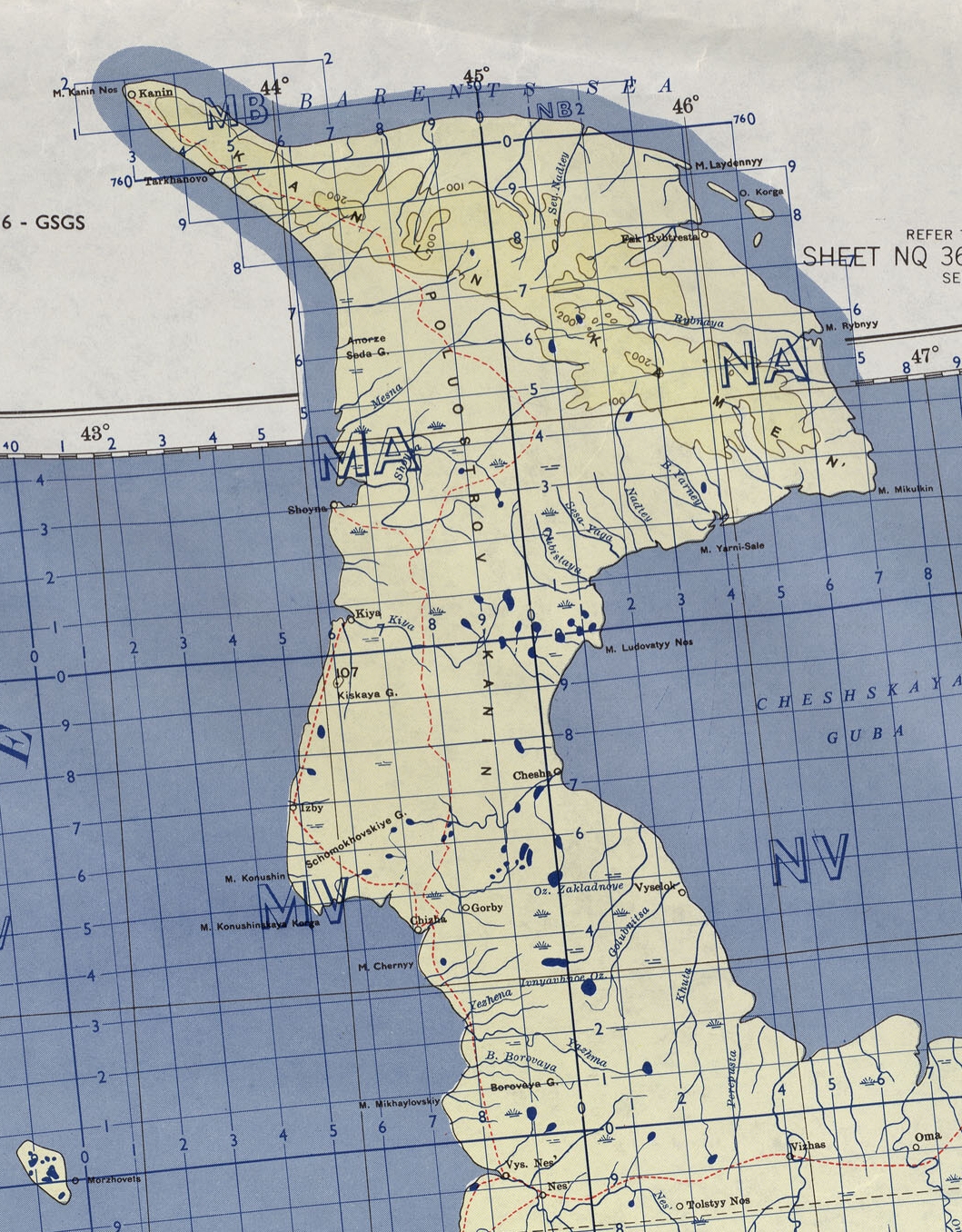Cape Kanin on:
[Wikipedia]
[Google]
[Amazon]
The Kanin Peninsula () is a large peninsula in 
Nenets Autonomous Okrug
The Nenets Autonomous Okrug (russian: Не́нецкий автоно́мный о́круг; Nenets languages, Nenets: Ненёцие автономной ӈокрук, ''Nenjocije awtonomnoj ŋokruk'') is a federal subjects of Russia, federal su ...
, Russia
Russia (, , ), or the Russian Federation, is a List of transcontinental countries, transcontinental country spanning Eastern Europe and North Asia, Northern Asia. It is the List of countries and dependencies by area, largest country in the ...
.
It is surrounded by the White Sea
The White Sea (russian: Белое море, ''Béloye móre''; Karelian and fi, Vienanmeri, lit. Dvina Sea; yrk, Сэрако ямʼ, ''Serako yam'') is a southern inlet of the Barents Sea located on the northwest coast of Russia. It is su ...
to the west and by the Barents Sea
The Barents Sea ( , also ; no, Barentshavet, ; russian: Баренцево море, Barentsevo More) is a marginal sea of the Arctic Ocean, located off the northern coasts of Norway and Russia and divided between Norwegian and Russian territo ...
to the north and east. Shoyna
Shoyna (russian: Шо́йна; Nenets: Сояна’я, ''Sojanaꜧja'') (also spelled Shoina) is a coastal village ('' selo''), located on the Kanin Peninsula in northern Nenets Autonomous Okrug, Russia. It had a population of 300 as of 201 ...
is one of the few communities on the peninsula.

Fauna
For cetaceans,beluga whale
The beluga whale () (''Delphinapterus leucas'') is an Arctic and sub-Arctic cetacean. It is one of two members of the family Monodontidae, along with the narwhal, and the only member of the genus ''Delphinapterus''. It is also known as the whi ...
s are most commonly found. Male sperm whale
The sperm whale or cachalot (''Physeter macrocephalus'') is the largest of the toothed whales and the largest toothed predator. It is the only living member of the genus ''Physeter'' and one of three extant species in the sperm whale famil ...
s are known to occur as well.
Butterflies
There are 29 butterfly species in the forest-tundra and 14 species in the hypoarctic tundra. The data on the fauna and distribution of species in the forest-tundra of the Kanin Peninsula are generally typical of this natural zone. The most abundant species are ''Erebia disa
The Arctic ringlet or Disa alpine (''Erebia disa'') is a member of the subfamily Satyrinae of family Nymphalidae. It is associated with wet muskeg and bogs in subarctic and Arctic climates, and is often found near the tree-line. The larva overw ...
'', ''Oeneis norna
''Oeneis norna'', the Norse grayling, is a species of butterfly in subfamily Satyrinae, that occurs throughout Scandinavia and the northern Palearctic.
Description
It is extremely variable and the smaller, lighter ''O. norna'' often resemble ...
'', ''Clossiana freija
''Boloria freija'', the Freija fritillary, is a butterfly of the family Nymphalidae with a circumboreal distribution. It occurs in bogs and tundra. Its range includes Northern Europe to the north of 60° N, occasionally more southern location ...
'', ''Pieris napi
The green-veined white (''Pieris napi'') is a butterfly of the family Pieridae.
Appearance and distribution
A circumboreal species widespread across Europe and Asia, including the Indian subcontinent, Japan, the Maghreb and North America. It is ...
'', and ''Vacciniina optilete
''Agriades optilete'', the cranberry blue, is a butterfly of the family Lycaenidae. It is found in north eastern Europe, the Alps, North Asia, Japan, Korea and north western North America.
The length of the forewings is about 14 mm. The but ...
''. The dominant species in southern tundra localities are ''Erebia euryale
''Erebia euryale'', the large ringlet, is a species of butterfly belonging to the family Nymphalidae.
Subspecies
Subspecies include:Erebia pandrose
''Erebia pandrose'', the dewy ringlet, is a member of the subfamily Satyrinae of the family Nymphalidae . It is found from the Arctic areas of northern Europe, the Pyrenees, Alps, the Apennine Mountains, the Carpathian Mountains, Kola Peninsula ...
'', and '' Boloria aquilonaris'', which coincides with the result of the 1903 research. A high abundance of ''E. pandrose'' is a specific feature of the northern part of the Kanin Peninsula and Kolguev Island, pointing to the connection of the biota of these territories with the subarctic regions of Fennoscandia
__NOTOC__
Fennoscandia (Finnish language, Finnish, Swedish language, Swedish and no, Fennoskandia, nocat=1; russian: Фенноскандия, Fennoskandiya) or the Fennoscandian Peninsula is the geographical peninsula in Europe, which includes ...
.
Climate
The climate on the Kanin Peninsula has cold winters with moderate maritime influences and cool summers. The north has atundra climate
The tundra climate is a polar climate sub-type located in high latitudes and high mountains. undra climate https://www.britannica.com/science/tundra-climateThe Editors of Encyclopaedia Britannica, 2019 It is classified as ET according to Köppen ...
(''ET'') and the south a subarctic climate
The subarctic climate (also called subpolar climate, or boreal climate) is a climate with long, cold (often very cold) winters, and short, warm to cool summers. It is found on large landmasses, often away from the moderating effects of an ocean, ge ...
(''Dfc'') thanks to the warmer summers.
References
{{Authority control Peninsulas of Russia Landforms of Nenets Autonomous Okrug